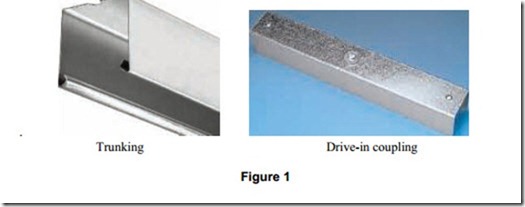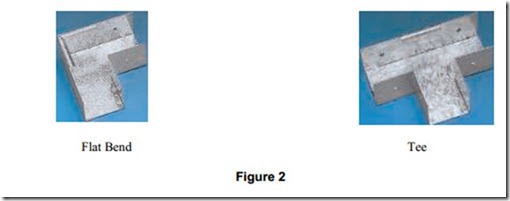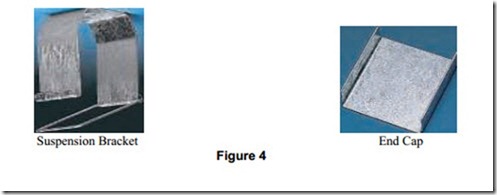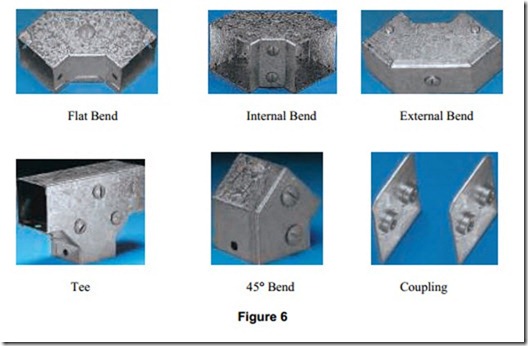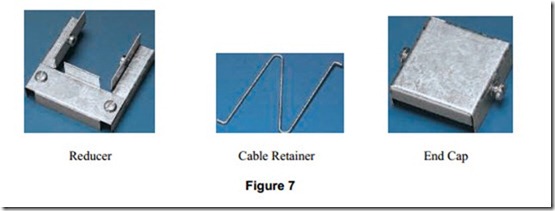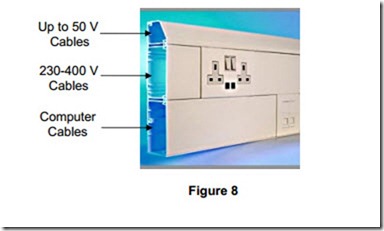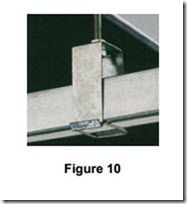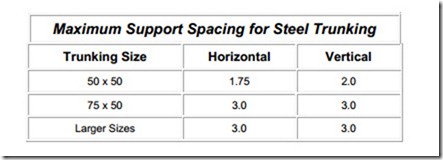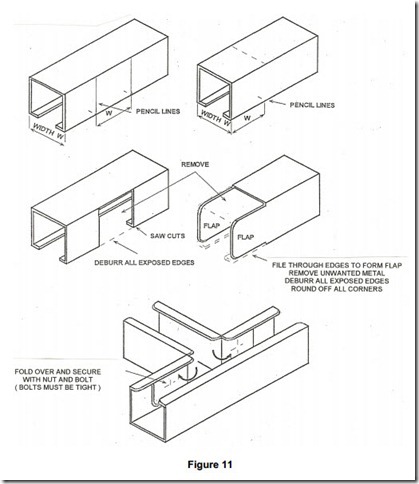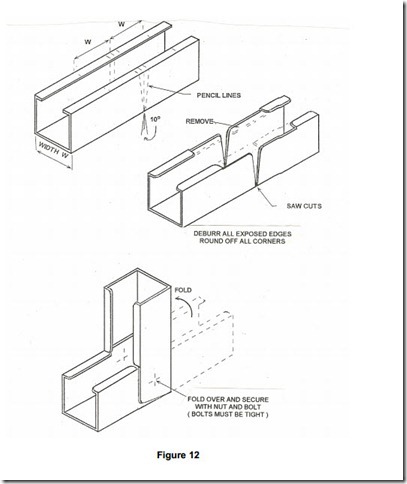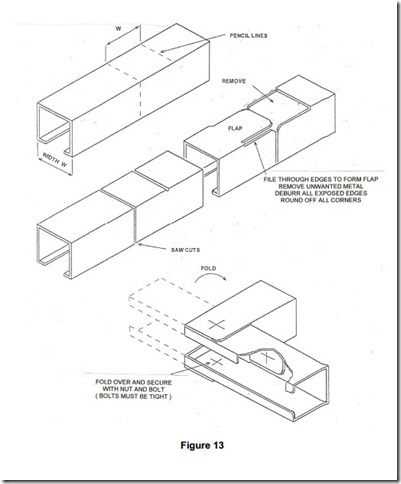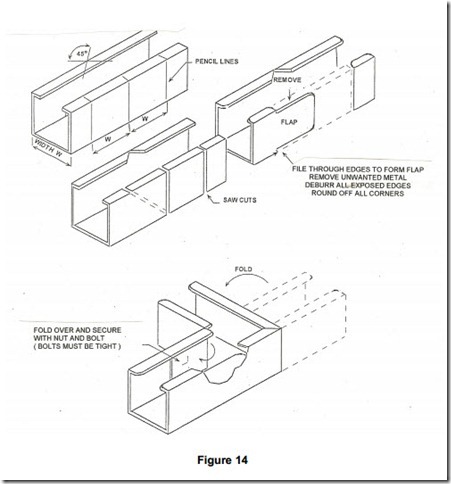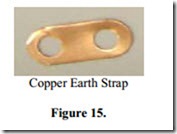Steel Trunking
A trunking is an enclosure that provides for the protection of cables. It is normally square or rectangular in cross section, and has a removable lid.
A trunking system offers great flexibility when used in conjunction with conduit systems. Trunking forms the backbone or framework of an installation. Conduits run from the trunking to accessory outlet boxes.
When an alteration or extension is required to an installation it is easy to drill a hole in the side of the trunking and run a conduit to the new accessory point. New wiring can then be drawn through the new conduit and the existing trunking to the supply point.
Types and Sizes of Steel Trunking
There are a number of types of steel trunking such as:-
· Lighting Trunking
· Cable trunking
· Multi-Compartment trunking
· Bus-bar Trunking
Typical surface finishes.
· Hot dipped galvanised coating
· Grey enamel on zinc coating
· Silver enamel on zinc coating
· Stainless steel
Standard Sizes of Trunking
Trunking is generally supplied in 3 metre lengths. Lighting trunking is often supplied in 5 metre lengths. Other lengths are available on request.
Lighting Trunking
Steel trunking may be used to install luminaires. This type has quick fit drive-in couplings, which allow for fast, easy installation of long runs. The trunking is installed with the opening downwards as shown in Figure 1.
A range of fittings is available to accommodate changes in direction, tees and intersections. These are bolted in position using at least two bolts depending on trunking size.
Cable retainers are used to prevent the cables falling out of the trunking. Special attachments are used to fix the luminaires to the trunking and also to allow the cables enter for connection. See Figure 3
Suspension brackets are used to suspend the trunking at the required height below the ceiling. End caps and either steel or plastic lids are installed to complete the enclosure. The lid is simply clipped into position.
Cable Trunking
Standard cable trunking is similar in design to lighting trunking. The lid in this case is held in place with turnbuckles. A quarter turn of a large flat screwdriver will either fasten or loosen the turnbuckle.
A range of fittings is available to accommodate changes in direction, tees, intersections and to couple lengths together. These are bolted in position using at least two bolts depending on trunking size.
Changes in trunking size are simply made by using reducers. Cables are easily kept in place in the trunking with cable retainers. End caps are used to complete the enclosure.
Multi-Compartment trunking
The increasing use of electronics and differing voltage levels in industrial installations has necessitated the use of multi-compartment trunking, which is designed to segregate ( separate ) the various voltages and services.
Segregation of this nature is a requirement of the ETCI Rules. For example, it prevents an extra low voltage system, coming into contact with a low voltage system even in the event of a fault.
Figure 8 shows a typical section of multi-compartment trunking.
Areas of Application
Steel trunking systems are used in commercial and industrial premises. Lighting trunking is generally used to supply and support fluorescent fittings, which illuminate large floor areas. Cable trunking is installed at a suitable height around the walls of the building. Conduit drops are then used to supply outlet points. Multi-compartment trunking is used where different electrical services are required in close proximity to each other. It is ideal in large offices and classrooms. Here it may be used to accommodate cables for supplying equipment at 230 Volts, plus data cables for computers, printers etc. These supplies must be segregated from each other.
Types of Support
Trunking should be secured by round-headed screws or bolts. This prevents damage to cables during installations. In industrial installations, trunking may be run overhead, supported at intervals by the lower members of the roof trusses. It may be suspended from or fastened directly to right angle brackets. It may also be fixed directly to a wall surface. Figure 9 shows a number of fixings, which may be used to support trunking.
Figure 10 shows a run of trunking supported by suspension brackets. The threaded rod also allows for final height adjustment.
Spacing of Supports
The spacing of trunking supports is not a simple topic as there are so many variables such as: – size of trunking, size and number of cables to be installed, type and strength of support available. However the following table lists the maximum distances between supports for steel trunking.
Cable Capacity and Space Factor
Trunking is primarily intended for the installation of PVC insulated cables. The maximum number of cables that can be installed in a trunking system is based on only 45% of the available space being occupied. This does not mean that the trunking should appear to be less than half full of cable. Remember that all the unoccupied space in between the cables is included in the calculation.
The main reason for limiting the number of cables to this level is to eliminate problems associated with an excessive build up of heat inside the trunking. If too many cables are installed the cable insulation will suffer damage due to overheating. There is also the possibility of fire risk.
The ETCI Rules provides a handy guide to aid the calculation of the cable capacity of trunking. It allows for a mixture of all the common cable sizes up to 10 mm2. Other cable sizes have to be accounted for on an individual basis. Remember that the overall cable CSA must be used in the calculation ( not the CSA of the conductor alone ).
If multi-core cables are to be installed in trunking the 45% space factor still applies, except in
the case of one multi-core cable only.
Fabrication and Installation of Tees and Bends
Tee and bends may be fabricated where required in lengths of trunking. This may be necessary or simply more convenient, particularly if the required bend or set is non-standard. It takes more time to fabricate tees or bends than to bolt on manufactured accessories.
Note-: It is recommended that a 32 TPI hacksaw blade be used for cutting steel trunking.
Forming a Tee Joint
Earthing of Steel Trunking
A trunking installation must be earthed. Earth continuity is ensured by the proper tightening of all bolts used throughout the system. Some manufactures recommend that earth continuity be completed by fixing a copper or aluminium strap across all joints. It is more important that all the bolts involved in the system are tightened. It is not unusual to find that copper or aluminium straps are used, but are left loose, resulting in poor earth continuity. See Figure 15.
Related posts:
Incoming search terms:
- metal trunking cutting guide
- steel trunking advantages and disadvantages
- trunking system
- pros and cons of steel trunking to pvc trunking
- what tools are required to work on steel trunking
- electrical trunking
- trunking terms and size
- trunking is loose
- advantages of trunking wiring systems
- trunking fixing metal
- electrical trunking systems
- metal trunking machine
- electrical trunking installation guide
- electrical Cable Steel Trunking
- earthing trunking
- steel trunking systems
- Trunking
- trunking cuting
- advantage of steel conduit
- Metallic Processing Machinery mail
- trunking systems
- steel trunking advantages
- Cable Trunking mail
- 1 inch steel trunking
- type of trunking
- for use in trunking and steel conduit
- pvc trunking cuting
- State the advantages and disadvantages of metallic and non-metallic Trunking systems
- CUTTING TRUNKING GUIDE
- Core Cutting Equipment mail
- Steel trunking numbers
- frange joint of trunking
- steel trunking vs steel conduit
- Technics to cut truncking conduit
- tool kit required to install steel trunking
- tranking cut
- tranking cutting
- different types of metal trunkings and sizes
- plastic trunking systems on edges
- FORMS OF TRUNCKING IN A WIRING SYSTEM
- electrican trunking cutting
- how to cut trunking electrical
- is steel trunking water proof
- it is the type of metal conduit which is designed to lessen or eliminate fire hazard
- long trunking couple install
- electrical trunking cutting machine
- electrical trunking cutting tips
- Electric stainless steel noodles making machine manufactures
- elecreical trunking steel
- with aid of a diagram describe overhead trunking system
